Decoding the Mysteries: Unveiling Cat Body Language
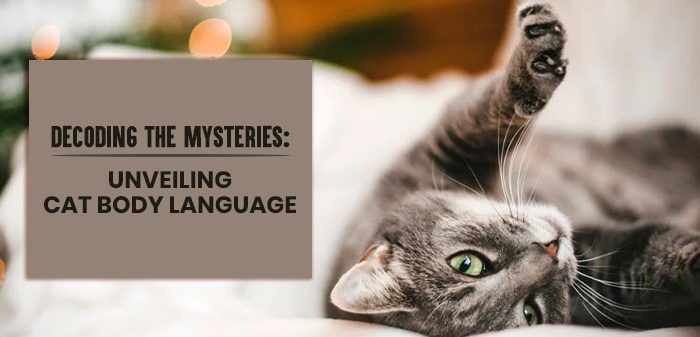
Cats, with their elegant grace and enigmatic behavior, have captured the human imagination for centuries. These furry felines have a unique way of communicating, and understanding their body language can be the key to forging a strong bond between humans and cats. Decoding the mysteries of cat body language empowers cat parents and enthusiasts to better comprehend the subtle messages their feline companions convey. From the twitch of a tail to the position of their ears, every movement is laden with meaning.
When it comes to communicating, cats possess a vibrant language of their own that goes far beyond their meows. Understanding their body language can unlock a deeper connection with our feline friends. Whether it’s the confident upright tail of a content cat or the flattened ears indicating fear or submission, each gesture unravels a part of their intricate communication system. By understanding these cues, we can discern their moods and desires, and even anticipate their needs.
Cats use various visual cues like posture, tail position, and facial expressions to express their emotions. Furthermore, their vocalizations, including purring, hissing, and meowing, are another vital part of their language. By examining and paying attention to their vocals and gestures, we can gain a comprehensive understanding of what our feline friends are trying to tell us. In this blog, we will delve into the various aspects of cat body language, including their eyes, ears, tail, whiskers, as well as vocalizations, to decipher their subtle messages.
Full Body – Eyes, Ears, Tail, Whiskers, and Vocals:
A cat’s body language relies heavily on its eyes, ears, tail, whiskers, and vocalizations. Each part conveys specific messages, allowing us to better understand our furry companions.
Cat body language can be deciphered by observing the positions and movements of various body parts, including the eyes, ears, tail, and whiskers. Each of these body parts provides valuable insights into a cat’s mood, emotions, and intentions.
1. Eyes: Deciphering Your Cat’s Gaze

Cats truly express themselves through their eyes. Peering into those captivating eyes, you can discover a world of emotions and intentions. Unveil the hidden meanings behind different eye signals and expressions. From dilated pupils indicating excitement or fear to slow blinks conveying trust and affection, your cat’s eyes speak volumes.
#Dilated Eyes:
Dilated pupils indicate excitement, fear, or aggression, while constricted pupils suggest relaxation or contentment.
#Rapid Blinks:
Rapid eye blinking is a sign of trust, while staring with unblinking eyes can mean challenge or aggression.
#Slow Blinks:
A slow blink from your cat is considered a sign of affection and trust.
2. Ears: Understanding Your Cat’s Ear Language
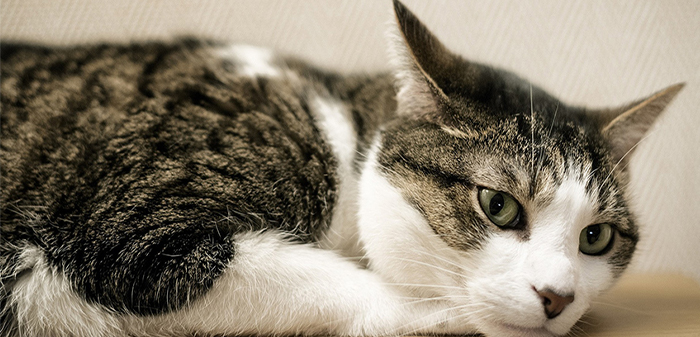
Listen closely! Your cat’s ears can reveal volumes about their level of attention, alertness, and mood. Unravel the secrets of their ear signals and gain insight into their state of mind. From perked and forward-facing ears signaling curiosity to pinned-back ears indicating fear, their ears are a window into their world. Pay attention to the position of a cat’s ears.
#Standing Ears:
Straight-up ears signify attentiveness or curiosity.
#Flattened Ears:
When they are flattened against the head, it usually indicates fear, stress, or aggression. Half-flattened ears may indicate uncertainty or submission.
#Ear Twitch:
Cats may also twitch their ears subtly to localize sounds or to express discomfort or irritation. Keep in mind that some cats naturally have slightly slanted backward ears; therefore, observing the overall context is important.
3. Tail: Cracking the Code of Cat’s Tails
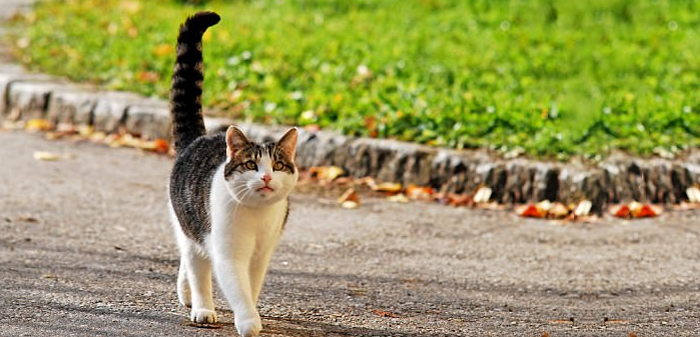
Did you know your cat’s tail holds the key to understanding its thoughts and behaviors? Discover the fascinating world of tail signs and decipher what those movements truly mean. From wagging with excitement to puffing up with aggression, your cat’s tail is a powerful communicator. It is an essential component of a cat’s body language repertoire. It is like a flag conveying its emotional state.
#Straight or Upright:
A straight, upright tail signifies confidence or a greeting.
#Low-Positioned Tail:
A low-hanging tail suggests uneasiness or fear.
#Puffed-Up & Bristled:
A puffed-up, bristled tail is a clear sign of fear or aggression.
#Flicking or Lashing:
A flicking or lashing tail can indicate agitation.
#Tucked Tail:
A tail tucked between the legs suggests fear or submission.
#Tail Twitching:
Rapid twitching may indicate heightened arousal or annoyance. Additionally, a cat will often wrap its tail around you if it feels comfortable and affectionate.
4. Whiskers: Interpreting Your Cat’s Facial Feelers
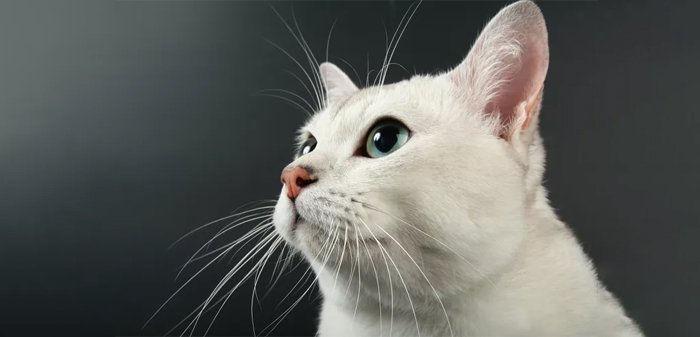
Did you know your cat’s whiskers are not just for decoration? These remarkable sensory organs play a crucial role in their locomotion and communication. Delve into the fascinating language of whisker signals and uncover their meanings. Whether they’re relaxed or pulled back tightly, your cat’s whiskers convey valuable insights into their emotional state.
The whiskers, or vibrissae, are highly sensitive and serve as an important sensory tool for cats. It is a navigation tool for cats and also plays a vital role in communication.
#Forward Pointed:
When relaxed, the whiskers are pointed forward.
#Pulled Back Whiskers:
A cat with whiskers pulled back close to their face may indicate a signal of fright or anxiousness.
#Downward Whiskers:
Whiskers pointing slightly downward can signify aggression or displeasure.
Be cautious not to touch or trim a cat’s whiskers, as they are essential for their sensory perception.
5. Cat Meows and Other Vocalizations: Decoding the Sounds of Your Cat
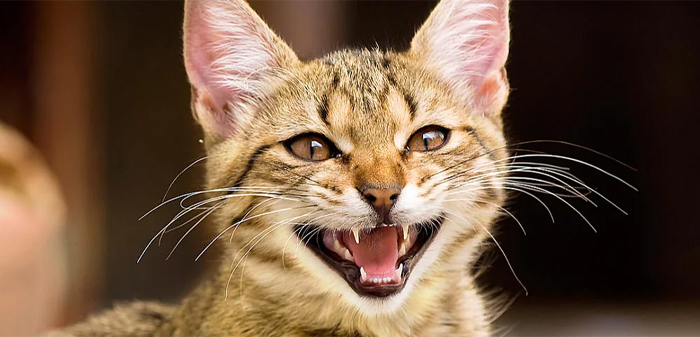
Meow! Meow! Don’t get lost in translation with your feline friend. Explore the diverse repertoire of cat vocalizations and learn to distinguish between their different meanings. From annoyed meows to playful purrs, understanding their vocal language will help you respond to their needs and desires with precision. Cats have a wide range of vocalizations that can speak volumes about their intentions or emotions.
#Meows:
Meowing can signify hunger, greetings, or requests for attention.
#Hissing or Growling:
Hissing or growling indicates fear, agitation, or anger while purring generally conveys contentment.
Each cat has its unique vocal repertoire, and understanding their patterns can provide valuable insight into their needs and desires.
Bottom Line:
Understanding cat body language is a crucial aspect of being a responsible and empathetic cat parent. By deciphering their signals through their eyes, ears, tails, whiskers, and vocalizations, we can engage with our feline companions in a meaningful way. This knowledge allows us to respond appropriately to their needs, provide a comforting environment, and ultimately strengthen the bond between humans and cats. In the mesmerizing world of cats, learning to understand their body language is akin to deciphering a secret code.
The more we tune into their subtle cues and messages, the richer our relationships with these enigmatic, furry creatures become. So, grab your curiosity, observe your feline friend closely, and embark on a journey of cat body language exploration. Discover the wonders that await you as you unlock the secrets of their captivating language.
Take Care of Your Feline Behaviour

